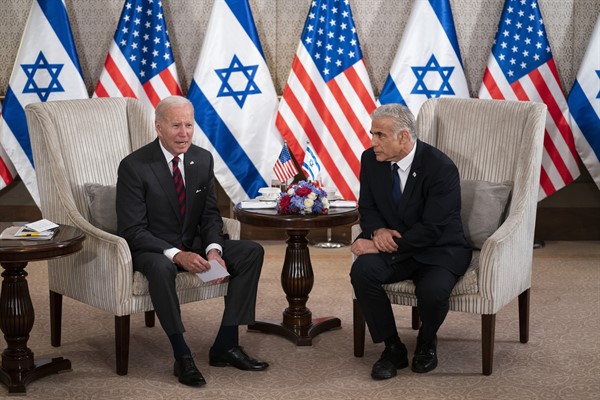U.S. President Joe Biden made his first presidential trip to the Middle East this week, stopping in Israel for a three-day visit that was refreshingly uncontroversial, before heading on to Saudi Arabia for a meeting with the kingdom’s de facto ruler, Crown Prince Mohammed bin Salman, that has raised hackles in Washington since it was announced several weeks ago.
The contrasting atmospherics of the two legs of Biden’s trip serve to underscore how much has changed in the region in recent years, but also paradoxically how much has stayed the same.
Coming a year after the U.S. withdrawal from Afghanistan, Biden’s trip marks the first presidential visit since the U.S. closed the book on the post-9/11 era. Though U.S. forces remain deployed in Syria and Iraq, the reality is that, with the symbolic end of America’s “forever wars,” the region has receded in terms of the bandwidth it occupies in Washington foreign policy circles—and U.S. public opinion. Though conflict continues across the region, it is of a low enough intensity and accompanied by so many multiple tracks of diplomatic engagement that one can now speak of a “normalized” Middle East, at the very least in terms of U.S. foreign policy framings, but in other important ways as well.

